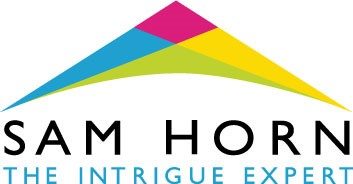“It’s not about you. It never was.” – actress Diane Keaton
Do you know anyone who likes listening to a speech? Me neither.
Speeches are lectures. Who wants to be lectured?
That’s why, from now on, when someone asks, “What do you do?” never again TELL them.
What?! Here’s an example to show what I mean.
Years ago, I was on a speaking tour with my sons. We had a night free in Denver, so we went downstairs to the hotel lobby to ask the concierge, “What do you suggest?”
He took one look at Tom and Andrew and said, “You’ve got to go to D & B’s.”
We were from Maui at the time and had no idea what he was talking about. We asked, “What’s that?”
He must have instinctively known that trying to explain it would only confuse us. Instead, he asked a qualifying question, “Have you ever been to Chuck E. Cheese?”
My sons nodded enthusiastically.
He smiled and said, “D & B’s is like a Chuck E. Cheese … for adults.”
Bingo. Ten seconds and we knew exactly what it was and wanted to go there. They should have put him on commission.
Want to Connect? Turn Monologues into Dialogues
Why did that work so well? He turned a one-way elevator speech (aka monologue) into a two-way elevator connection (aka dialogue).
Here’s an example to show how you can do the same.
A man approached me before a presentation and said, “I’m going to tell you something I haven’t told many people. I’m an introvert. I go to conferences like this all the time, but I often hide out in my hotel room because I’m so uncomfortable with small talk. Plus, I work in tech. My job is complicated. I can never explain it in a way that people understand it. It’s so awkward, I rather just avoid receptions and hall chat.”
I asked, “Want to play and brainstorm a way to introduce yourself that isn’t confusing and that can actually lead to meaningful conversations and connections?”
He came back with, “Is that a rhetorical question?”
I asked, “What are the end results of what you do that we can see, smell, taste and touch?”
He thought about it for a moment and said something about credit cards, online purchases, financial software and computers. The light bulb went off in my mind. “Do you make the software that makes it safe for us to buy stuff online?”
He lit up. “Yes! That’s exactly what I do.”
“That’s good … but don’t tell people that.”
He looked at me, puzzled. “Why not?”
“Because if you tell people, ‘I make the software that makes it safe for you to buy things online, they’ll go, ‘Oh,” and that’ll be the end of the conversation. You don’t want to closethe conversation; you want to create a conversation.”
“So what do I do instead?”
Ask, ‘Have you, a friend or a family member ever bought anything online … like on eBay, Travelocity or Amazon?’ You just increased the odds they’ve experienced what you do or know someone who has. They may say, ‘Well, I never shop online. But my wife’s on Amazon all the time. She loves the free shipping.’
Now, confirm your connection by linking what you do to what they just said, ‘Well, our company makes the software that makes it safe for your wife to buy things on Amazon.’
Their eyes will probably light up and their eyebrows will probably go up. Both are signs of an intrigued connection.
People now relate to you and what you do. They have a relevant hook on which to hang a conversation and are more likely to want to continue the conversation. All in 60 seconds and all because you engaged them instead of lectured them. ”
He actually got a little misty-eyed and told me, “I can’t wait to get home after this conference.”
“Why?”
” I can finally tell my eight year old son what I do in a way he understands it.”
That’s the power of turning an elevator speech into an elevator connection.
How about you? What do you and your co-workers say when asked, “What do you do?” Do your responses cause crunched-up eyebrows (a sure sign of confusion)?
If so, you’re closing doors and losing opportunities for yourself and your organization. Why not turn your next staff meeting into a brainstorming session where everyone crafts two-way introductions that open doors and engage people in mutually-rewarding conversations that are a win for all involved?
– – – – – –
This is excerpted from Sam Horn’s Washington Post bestseller Got Your Attention? and her TEDx talk on INTRIGUE. Sam’s keynotes receive raves from clients including Intel, Cisco, NASA, Accenture, Boeing, Capital One, Nationwide, and her work has been featured in New York Times, Forbes, INC, Fast Company; and endorsed by Dan Pink, Stephen Covey, Seth Godin and Tony Robbins. Want Sam to share these tips with your group? Contact Cheri@IntrigueAgency.com


